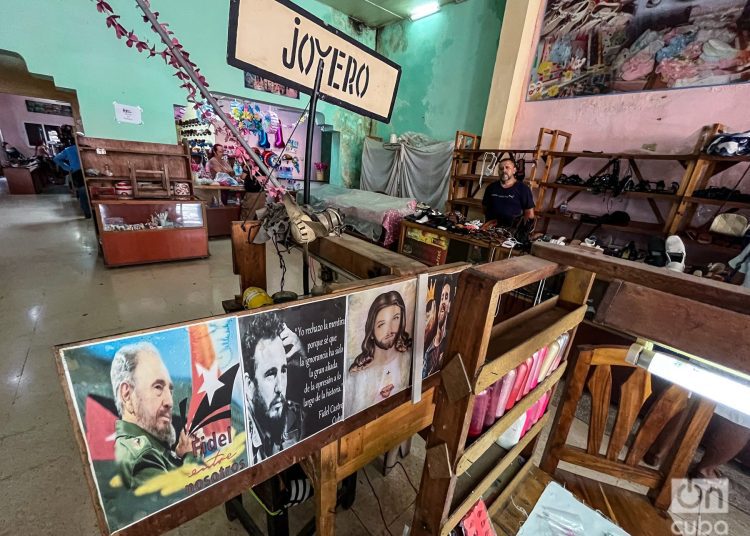There is hardly a more predicted event in the last seventy years than the death of Fidel Castro.
They said that he had been killed when he attacked the Moncada Barracks; when he landed on that muddy coast at the head of a group of castaways (Che dixit), without having the remotest idea where they were; when the army surprised him in a wrong cane field called Alegría de Pío; when Batista sent 12,000 soldiers to hunt him down in the summer of 1958.
It was rather a miracle that he survived all of that.
The CIA and a powerful counterrevolution put all their force into eliminating him, starting in 1959. At that time, he would go to eat fried rice in the early morning on Infanta Street or to drink a chocolate milkshake in the cafeteria of the Hilton Hotel, almost without an escort or “security agents” to thoroughly check the kitchen.
They placed shell bombs where he was going to go deep-sea fishing, they sent him cigars with explosives, and they recruited agents from among those close to him to kill him. Some of them came very close to doing it.
In my experience giving lectures and classes in the United States about Cuba, the most common question was “What will happen when Fidel Castro dies?” My reply, trying to explain the stability of the Cuban system beyond him, began by saying “If he ever dies….”
Not only did he survive, but he became a world figure, who would speed up the second half of the 20th century. Just nine years after failing in his attempt to take over the Moncada Barracks in Santiago de Cuba, he was the protagonist of world events such as the Missile Crisis, when for the first time the courage of a revolution in a small Third World country could be measured in the balance of all humanity.
His leadership went through periods as adverse as the failure of the ten-million-ton sugar harvest in 1970 and the economic and ideological collapse that accompanied the end of Soviet socialism in the 1990s. He suffered setbacks such as the failure of the Cuban guerrillas in Venezuela and in Bolivia in the 1960s, tensions such as the fifteen years of transatlantic war campaigns and battles against the powerful South African army, the defeat of its Sandinista allies in Nicaragua in the 1980s, the death and imprisonment of Cuban collaborators during the invasion of the marines to Granada, the loneliness and helplessness that followed the debacle of the Soviet Union.
During all that time, he maintained a mind-boggling daily work schedule, with barely three or four hours of sleep, dealing with every national and international problem imaginable. At 80 he began to fight what was predicted to be his last round, this time against the onslaught of his age.
What was the image of him among Cubans? What did his ideas, his leadership, his person mean to them?
I remember that before the overthrow of the Batista dictatorship, his supporters were “the Fidelistas” and he was simply “Fidel.” Calling him Castro marked, in the ears of any Cuban, a contrary position, a rejection. “Castroism” does not circulate in Cuba except as an imported term, foreign to Old Havana or Palma Soriano.
I have said before that it was a contradictory relationship, since “the Cubans,” that heterogeneous group of argumentative and opinionated people, did not support or approve of all his policies. Those in Cuba or outside of it found everything he did or said wrong, as well as those who agreed with him on everything or disagreed occasionally, had a personalized bond with Fidel Castro, a representation that is not the usual one with politicians.
In this brief space, a list of the stereotypes with which he has been represented, and is still evoked, would not fit.
To explain Cuban politics in the 1980s, the Rand Corporation produced a psychopathological diagnosis of Fidel Castro, with syndromes taken from Greek mythology, hubris (disproportionate arrogance) and nemesis (righteous revenge). Numerous works of investigative journalism (some based on stories collected in Miami) were published about his life. Others designed exit scenarios for the imminent disintegration of the regime he presided over. They all had the merit of their imaginative impulse, let’s say, a Catholic Church to which the role of mediating in the internal conflict was attributed, like that of Pope Karol Wojtyla in Poland; or a Cuban transition inspired by the models of Spain (1975), Chile (1989), Czechoslovakia and even German unification (1989). In all these variants the hypothesis was assumed that he was not there, because he had died, or had gone to enjoy his millions on a Mediterranean island.
It would be worthwhile for a specialized bibliographer to record this kind of political literature genre of recent decades around the Cuban Armageddon, dedicated to imagining a future without Fidel Castro.
The vast majority of those who identified with Fidel and the program of reforms and social justice, and aligned themselves with the radical conflict unleashed by the upper class and the United States, did not have the slightest idea of what socialism was, or communism, and even less so “the post-capitalist society” (a more recent, even more nebulous).
Those who in 1960-61 did not know what socialism was, but supported his reform program, moved in favor of the changes that Fidel embodied. Those changes — and not his charisma or his beard, as those at the CIA thought — were the cement of the political consensus.
It would be necessary to differentiate this cement and this consensus from the sentiment that prevails today among those who, with good reasons and better desires, want the best of previous socialism and the best of “popular” capitalism. That was a social and political force; this is just ― to be said with all due respect ― a letter to Santa Clause.
According to another widespread stereotype, Fidel Castro was hunting windmills in lands beyond the seas, like Don Quixote. If he had been Don Quixote, his archenemies would have caught him with one of the numerous traps they laid for him in almost fifty years. There are examples of his alliances and strategic cunning that I do not have space to repeat. I just want to point out that he was not a prisoner of his own dogmas, nor can his career be explained simply by ideological parameters. He was a politician, not a philosopher or a professor of Marxism-Leninism.
Under his command, there was a circulation of elites and even renewed political lines. Although the political scientist Mario Conde (Tusquests, 2013, p.24) does not agree with me, this generational renewal is not identical to the period in which Fidel Castro was at the helm. When he left power, in 2006, other generations that came after the “historic” one were already governing in each province, including Díaz-Canel. Not to mention Raúl’s decade. So it wasn’t a sixty-two-year cycle.
And in 2016, Fidel’s death came.
Ten years ago, when he became seriously ill, his enemies celebrated his death, once again anticipated in vain. When he died, he had survived by almost a quarter of a century a best-seller from the 1990s written by a Miami journalist, Andrés Oppenheimer, titled La hora final de Castro, “the definitive book on Cuba,” according to the Dallas Morning News. Fidel did not die a victim of any of the risks he ran or of the attacks planned by his enemies, but in his bed.
The next day, I went to Parque Central to see how things were in the street. Some passing tourists approached a group engaged in an intense discussion near the statue of José Martí. One of them asked the discussants if the topic was the event announced the night before. One of the group responded from the bench: “No, friend, we’re talking about baseball, you know.” I remember the look of bewilderment on the visitor’s face. Along Neptuno and San Lázaro streets, towards the hill of the University of Havana, the routine of traffic and pedestrians resembled that of a normal day.
Although, according to government guidance, educational and work activities were maintained, many who mentioned what had happened had a sad look. Only on the eve of the start of the funeral were activities suspended, so that everyone who wanted to do so could accompany him. Hundreds of thousands, old and young, went to the Plaza de la Revolución and mourned his death. The reasons for this were varied, like the population itself, and equally mixed, inside and outside the island.
The prevailing common denominator was perhaps the feeling that his legacy had given the country a different color on the world map.
In his last will, Fidel had asked that no statues be made of him or that streets or monuments be named after him. As with great historical figures and leaders, say, Abraham Lincoln and Mahatma Ghandhi, his legacy extended beyond themselves when they died. As a friend told me, the great dead become battlefields between the interpreters of their ideas.
If in life Fidel Castro had formidable enemies, the staunchest were those who once shared his ideals. This group includes those who lost them, and they do not forgive him for continuing to raise them; they attribute it to his petty desire to continue with the hammer and “the honey of power.” Without reaching that extreme, and especially in recent times, some others blame him for the lost illusions of their youth, reproaching him for having instilled in them unrealizable dreams.
This debate has so many ins and outs that it would be worth returning to them to rethink the present. Seven years later, it’s time. I would like to say it with a verse from the great Chilean poet, Vicente Huidobro, the one who closes his “Elegy on the Death of Lenin”: “As of today our duty is to defend you from being a god.”










